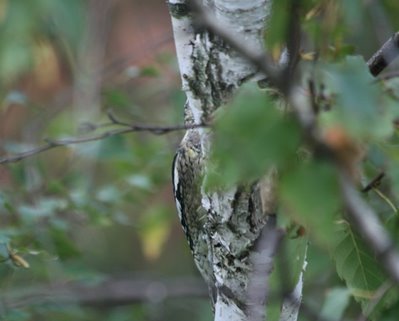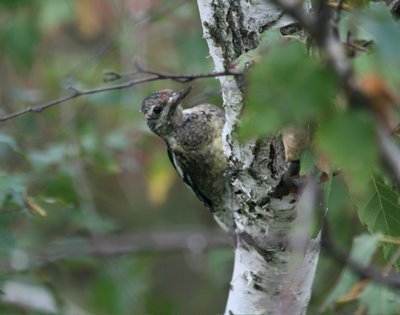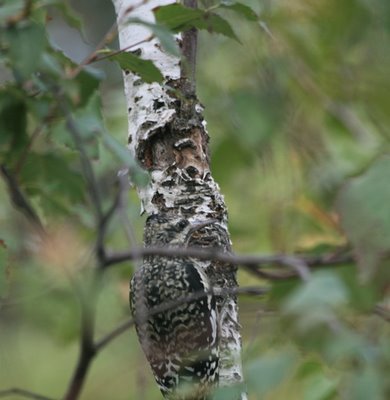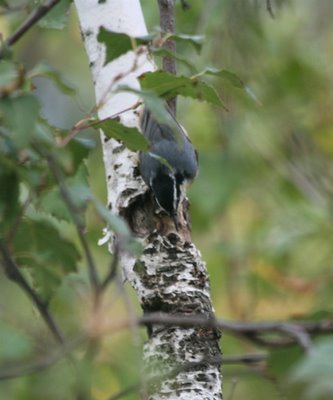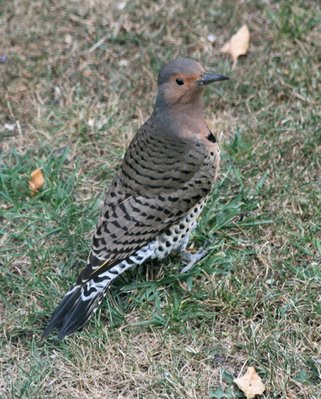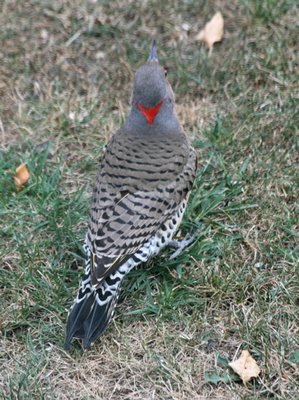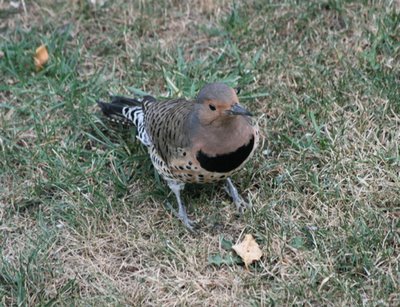Sumac-A Wildlife Survival Food
I love to capture images of birds at the feeder, but a hundred times more satisfying are images of birds eating what they're supposed to eat--the native seeds and fruits that abound in our yard, fields and forest. It's hard to get close enough with a 300 mm. lens without scaring the bird, so my pictures are often taken through the window of my big, heated, supremely comfortable blind: my house.
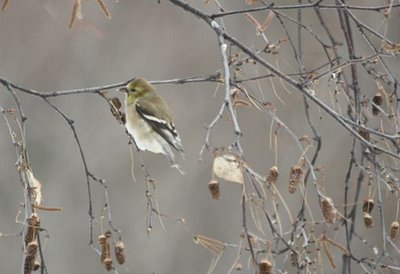
American goldfinches and pine siskins are always working on the seeds of the gray birches we've planted all over the yard. What they knock to the snow, the juncos, tree sparrows and field sparrows clean up.
Sumac rings all our meadows--five species in all. Here, a red-bellied woodpecker works on the fruits.
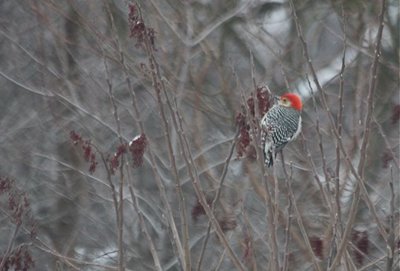
Turning about, he shows the origin of his seeming misnomer. I love this shot.
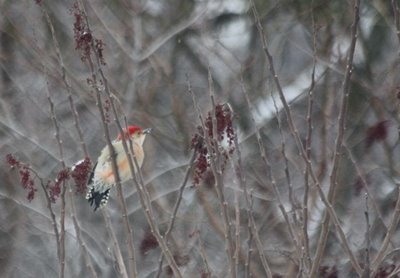
To me, the northern flicker is so impossibly beautiful that I can hardly believe it exists. I love, love, love to paint flickers. There's so much to do! This is a male, with a black moustache mark.
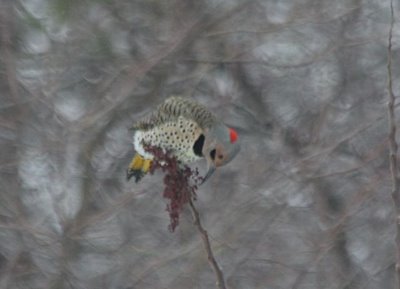 Sumac is a good food for wildlife because there's nothing in it that spoils or ferments, and it stays fresh from when it first ripens in October until at least May. It's always available, kind of the way All-Bran is always around. It may not be your first choice, but it's food.
Sumac is a good food for wildlife because there's nothing in it that spoils or ferments, and it stays fresh from when it first ripens in October until at least May. It's always available, kind of the way All-Bran is always around. It may not be your first choice, but it's food.As I shot the flicker, I was wishing hard that I was closer, that it wasn't so gray out...and yet the images have a simple beauty that I love.
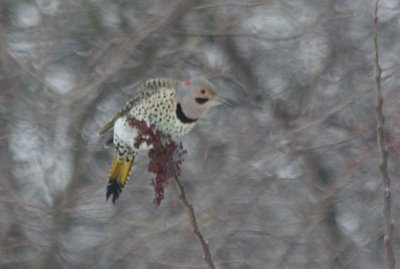 Who thought up all those markings? They are perfect. The bird is cryptic from above, spectacular from below--good for a ground-feeder. Flickers huddle on the ground, digging for ants in the summer, and they're all but invisible to predators with those brown-barred backs.
Who thought up all those markings? They are perfect. The bird is cryptic from above, spectacular from below--good for a ground-feeder. Flickers huddle on the ground, digging for ants in the summer, and they're all but invisible to predators with those brown-barred backs.Yet when they wish to make a splash they've got all the badges and bling they need.
Ahh. That's the one. I must paint it someday.
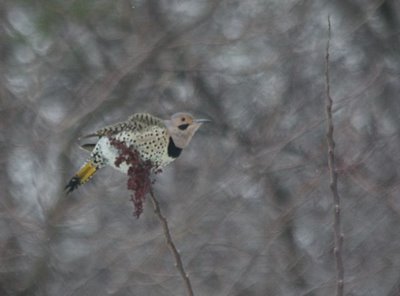
Labels: American goldfinches, birch seeds, northern flicker, red-bellied woodpecker, sumac fruits, winter food for birds

